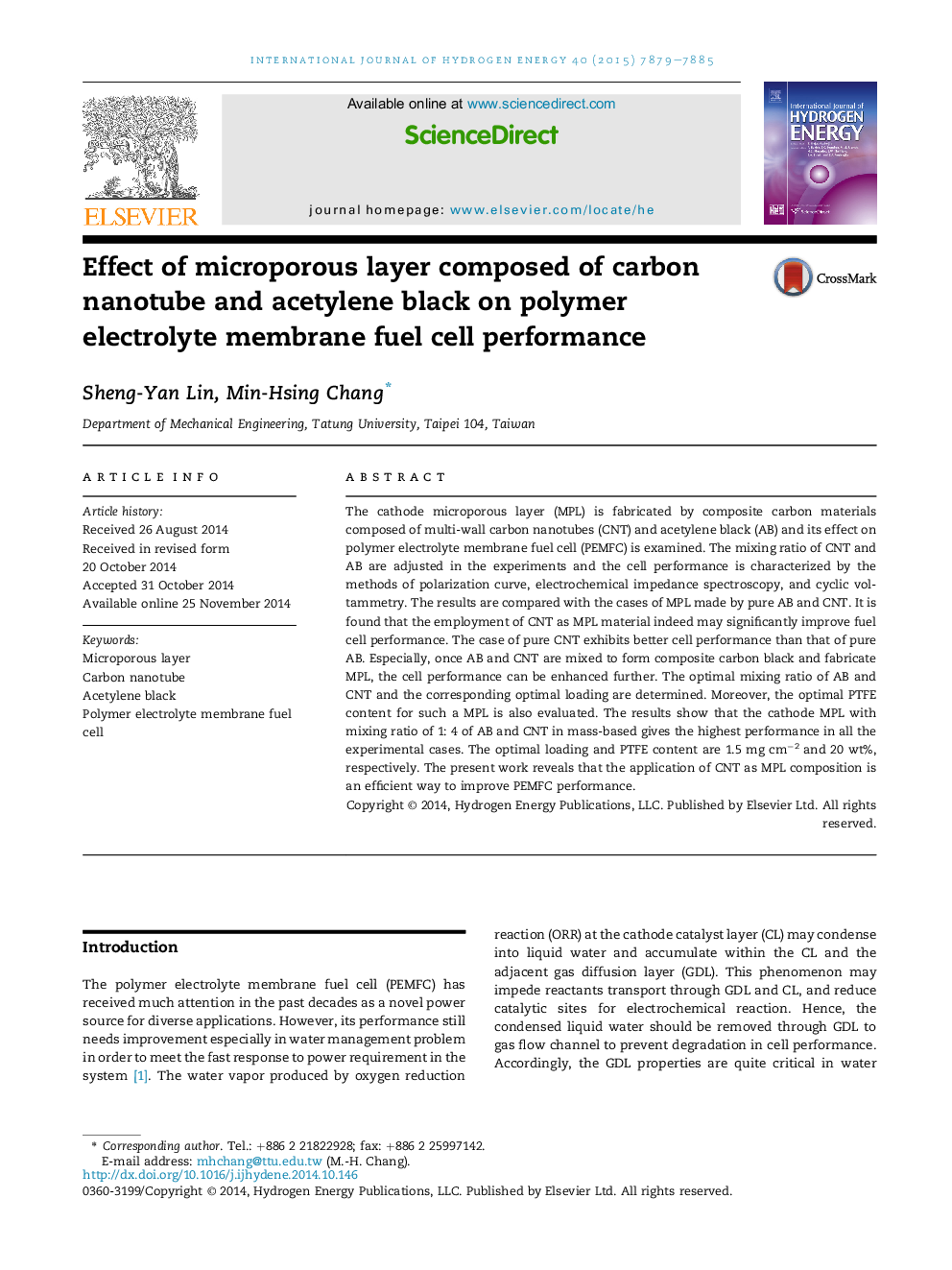| Article ID | Journal | Published Year | Pages | File Type |
|---|---|---|---|---|
| 1279763 | International Journal of Hydrogen Energy | 2015 | 7 Pages |
•Optimize the composition of cathode MPL using composite carbon black.•The mixing ratio of 1:4 of acetylene black and MWCNT presents the best performance.•The optimal loading of such a composite carbon black is found to be 1.5 mg cm−2.•The optimal PTFE content in the MPL using such a composite carbon black is 20 wt%.
The cathode microporous layer (MPL) is fabricated by composite carbon materials composed of multi-wall carbon nanotubes (CNT) and acetylene black (AB) and its effect on polymer electrolyte membrane fuel cell (PEMFC) is examined. The mixing ratio of CNT and AB are adjusted in the experiments and the cell performance is characterized by the methods of polarization curve, electrochemical impedance spectroscopy, and cyclic voltammetry. The results are compared with the cases of MPL made by pure AB and CNT. It is found that the employment of CNT as MPL material indeed may significantly improve fuel cell performance. The case of pure CNT exhibits better cell performance than that of pure AB. Especially, once AB and CNT are mixed to form composite carbon black and fabricate MPL, the cell performance can be enhanced further. The optimal mixing ratio of AB and CNT and the corresponding optimal loading are determined. Moreover, the optimal PTFE content for such a MPL is also evaluated. The results show that the cathode MPL with mixing ratio of 1: 4 of AB and CNT in mass-based gives the highest performance in all the experimental cases. The optimal loading and PTFE content are 1.5 mg cm−2 and 20 wt%, respectively. The present work reveals that the application of CNT as MPL composition is an efficient way to improve PEMFC performance.
